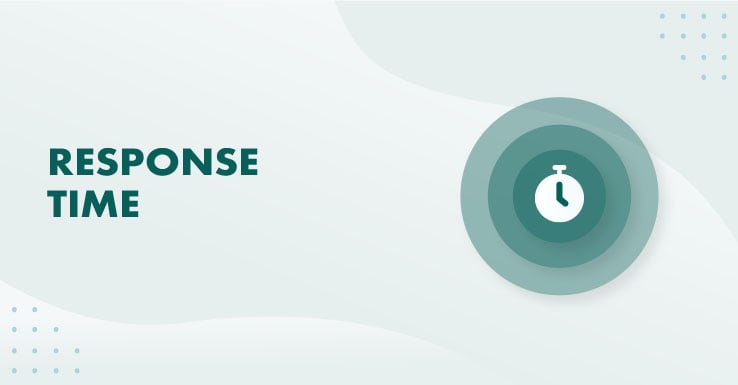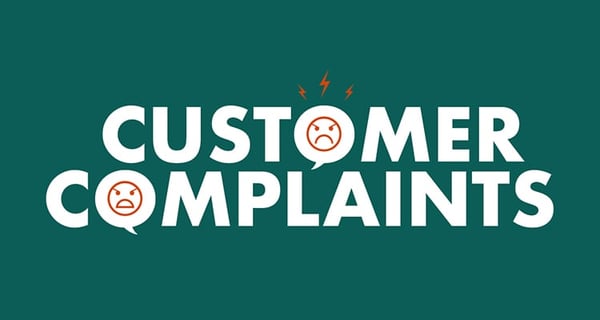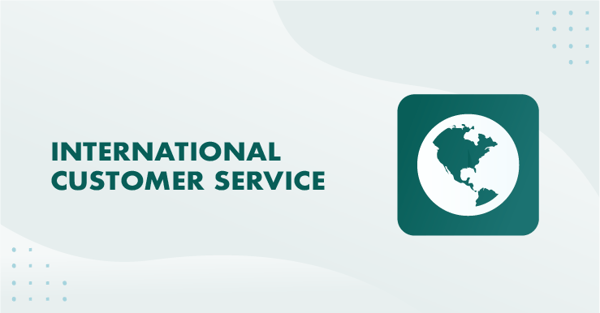Your customers are the source of your revenue.
Without them, you don’t have much of a business – so it’s important to keep them happy.
Yet, in our annual customer service study, we found that 62% of companies do not respond to customer emails.
It’s clear that you have an opportunity to stand out against the competition by simply responding to your customers.
For companies that do respond, the average response time is 12 hours – with the slowest response taking longer than 8 days!
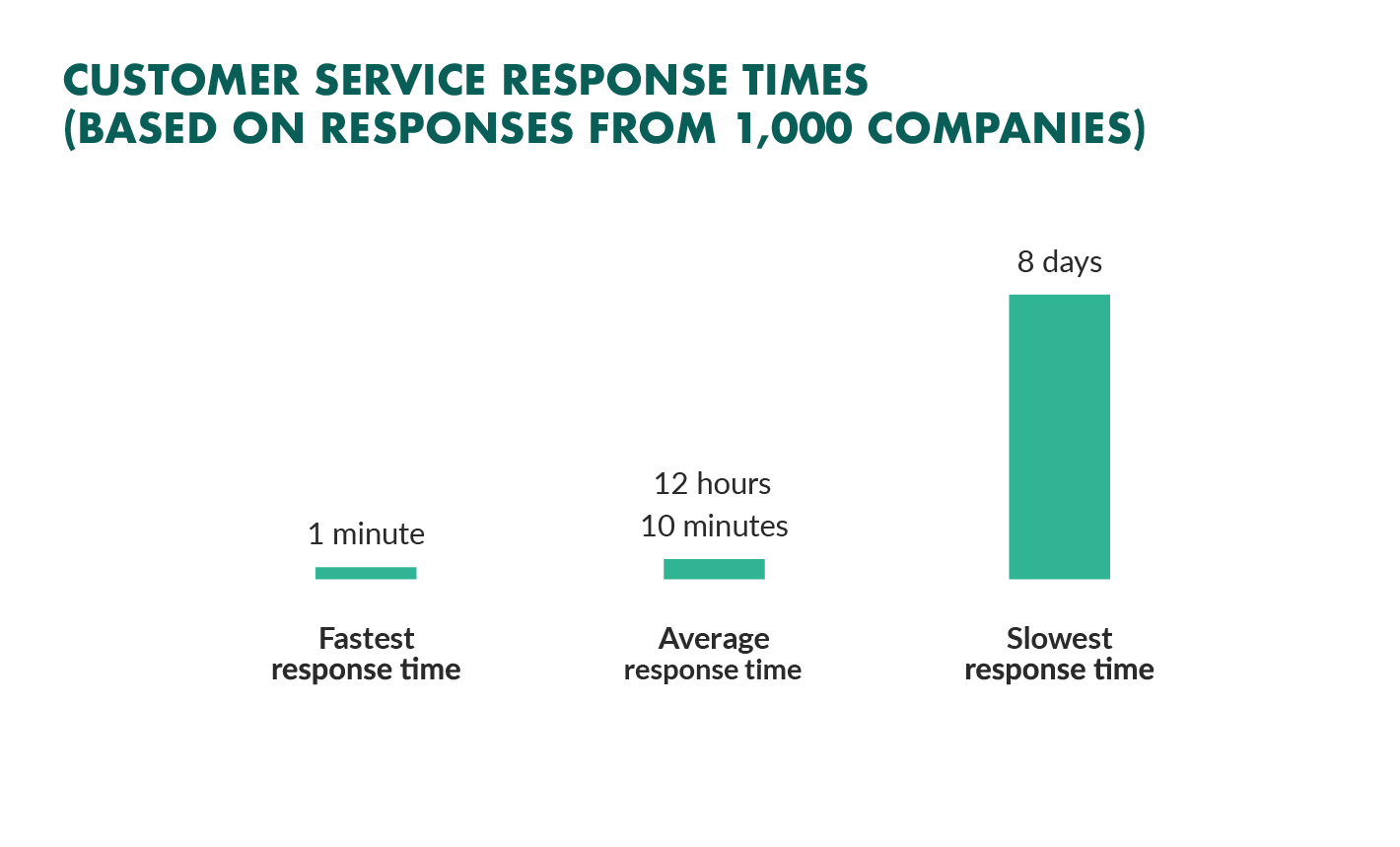
Together with Jeff Toister, we recently asked 3,200 consumers how quickly they expect companies to respond to their email.
The result? Nearly half of all customers (46%) expect companies to respond faster than 4 hours.
While 12% expect a response within 15 minutes or less.
Adding on, 90% of customers view an instant response as either crucial or very important when they need customer service assistance. Of these, 60% consider instant to mean within 10 minutes or faster.
There's clearly a mis-match here.
Do you know how long it takes for you to respond to your customers?
To answer that question, you need to calculate your first response time (FRT).
What is average first response time (FRT)?
Average first response time is one of the most important customer service reports used to understand how you are performing. It looks at not just the one-off response for a single customer, but the average response time for your entire department.
Reducing response times and responding to your customers with helpful and relevant information is the key to customer success.
Therefore, if you want to improve the experience for your customers, then you need to make reducing your average FRT a priority for your business.
So, how do I calculate average FRT?
To understand how to calculate your average FRT, there are two key pieces of data you need to collect from your customer service team:
- The total time it took to respond to emails during a selected time period.
- The total number of responses sent in that selected time period.
Make sure the time period for both metrics matches. You may want to look at this over the course of a day, a week, or even a month to get a clear picture.
Then, simply divide the top figure (total time to send responses) by the bottom figure (total number of responses). This will give you a single number of hours, which is your average FRT.
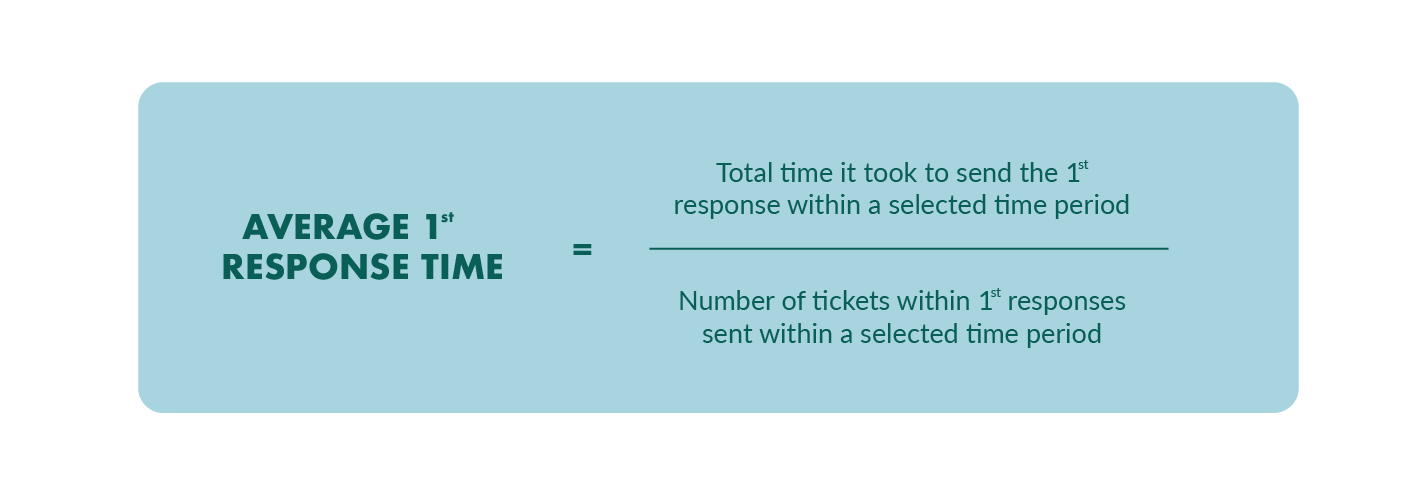
For SuperOffice Service customers, FRT is calculated automatically – meaning less work for you and your team.
Here, you can find the average response time by reporting period, by department or team and by individual agents.
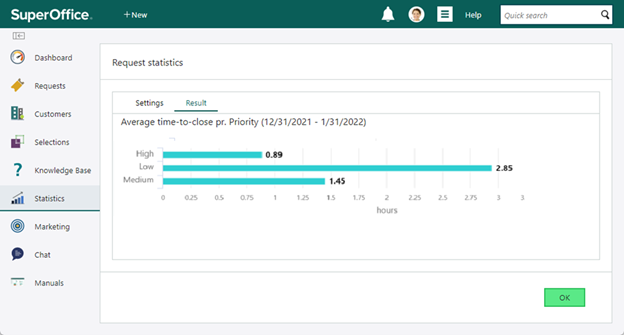
If you’re not a SuperOffice customer, then here’s how you can calculate your average FRT.
Let’s imagine you send 3 customer service emails per day.
The first email takes 2 hours, the second takes 4 hours, and the third takes 6 hours. Collectively, it takes you 12 hours to respond to all 3 emails. Now, divide 12 hours by the 3 emails you sent and you end up with an average response time of 4 hours.
If you calculate that your average response time is 4 hours, then – job well done!
However, if it takes your team longer than the average to respond, then it might be time to examine how to amp up team work and find new ways to improve your processes, so you can reduce response times and keep your customers happy.
But, do fast response times really matter?
Yes, they do, and here's why.
Why speed matters in customer service
Let's start with the obvious – a fast response makes your customers feel important.
Second, speed matters in customer service because your customers demand it!
CMO council found that the most important attribute of a good customer experience, according to the customers’ themselves, is a fast response time.
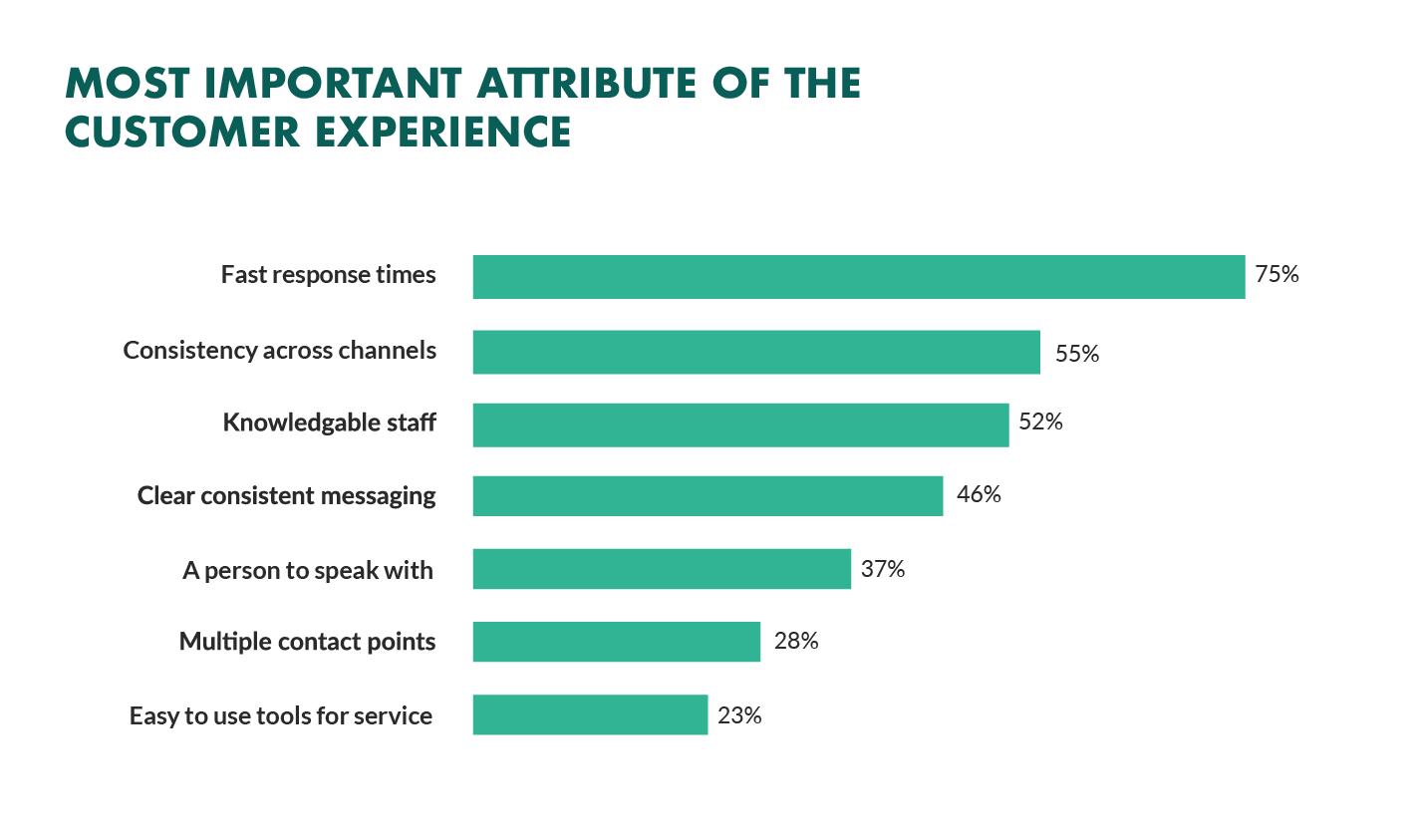
Therefore, responding quickly means you're meeting customer expectations.
What happens when a company takes too long to respond and doesn't meet expectations?
They stop doing business with you.
Personally, I prefer a response within 15 minutes - no more than an hour maximum.
If they don’t respond, I’ll find a new company to do business with (if possible). Slow response times definitely leave a bad impression for any future business. David Bailey-Lauring, CEO at Blu Mint Digital
Adding to that, a survey from Hiver found that 70% of consumers say they will advise their friends against buying a product or service after a negative service experience.
And the top customer service frustration among 27% of Americans is ineffective service.
Sadly, too few companies prioritize fast response times.
While Net Promoter Score and other customer success metrics remain popular, a study by Call Centre Helper found that only 12% of customer service managers are focused on responding quickly to their customers.
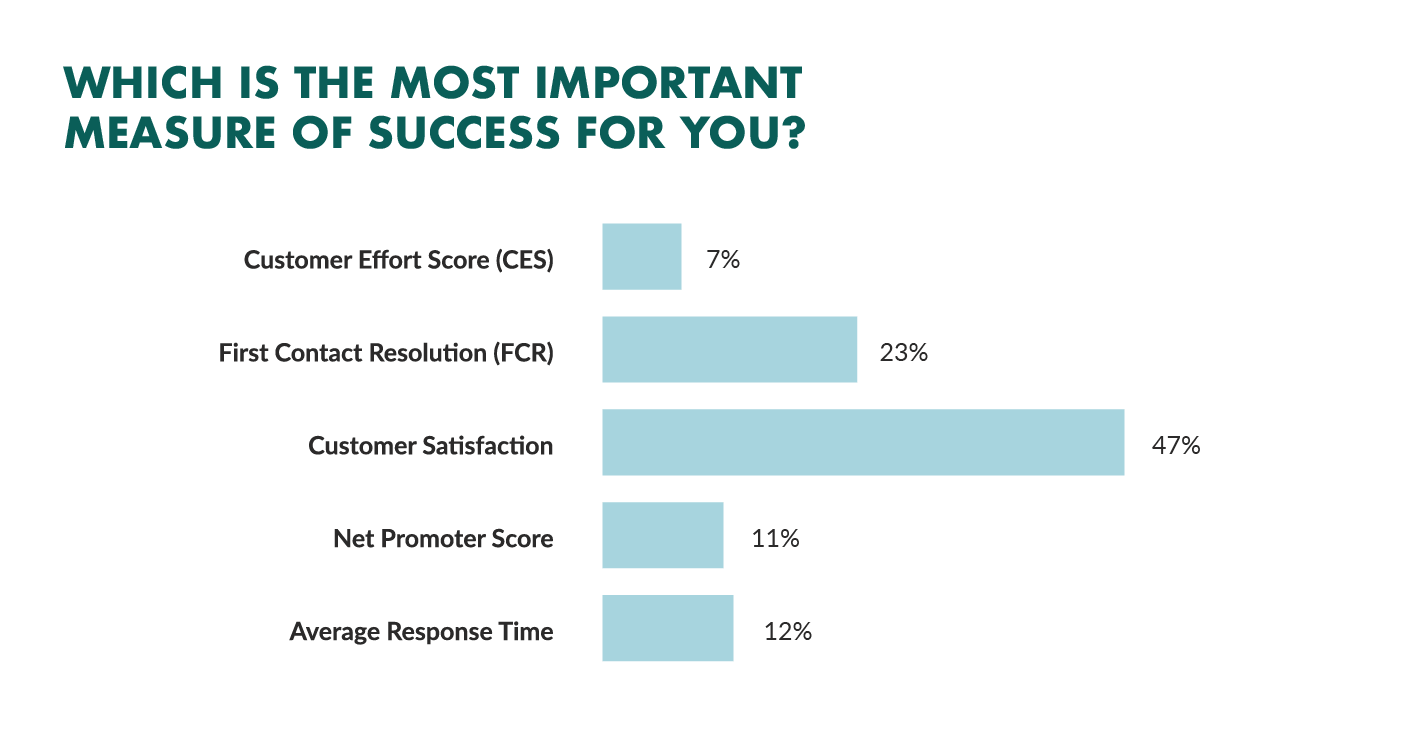
If meeting customer expectations isn't enough to persuade you of how important it is, perhaps another argument will do the trick?
The third reason for why speed matters is that if you don’t respond quickly, your customers will contact you through another channel – essentially doubling your workload.
The Northridge Group’s State of Customer Service Experience Report found that 40% of millennials (today’s decision makers) wait 60 minutes before they try to contact you in another channel.
Responding quickly means less work for you and your team, so you can spend more time on writing quality responses.
Finally, responding quickly to your customers will grow your business.
A study of more than 500,000 interactions found that customers are willing to spend more with a business that responds quickly to their enquiry. Simply put, a fast response generates higher revenue.
How to reduce customer service response times
There's a direct business benefit to reducing response times.
To help you get started, we’ve collected 7 of the most effective and easy-to-implement techniques that you can use to respond quickly to your customers.
1. Implement customer service software
Do you use customer service software?
If not, then now is the time to consider it. The software industry itself is expected to reach $58 billion by 2030.
If your company still uses a shared access mailbox to manage hundreds (or even thousands) of customer service emails, there’s no easier way to improve your customer service processes than to invest in and implement customer service software.
Customer service software stores every single conversation or interaction you’ve had during your company’s relationship with your customer. This means you can look back and understand their problems, identify details of the products they’re subscribing to and use this information to be more helpful in your response.
On top of this, using the right tools for the job means you’ll be much faster than you would be trying to piece together all this information from a shared inbox or other similar low-tech approach.
2. Use email autoresponders
Sometimes, all a customer needs to know is that their email has been received and that help is on the way. It’s only when their concerns, problems or complaints have gone ignored that negative sentiment begins to appear and potentially affect your long-term relationship with the customer.
A great way to overcome this is to use email autoresponders.
Less than 10% of companies use autoresponders, but this simple, age-old technology can be used to let a customer know you have received their email and what they should expect to happen next.
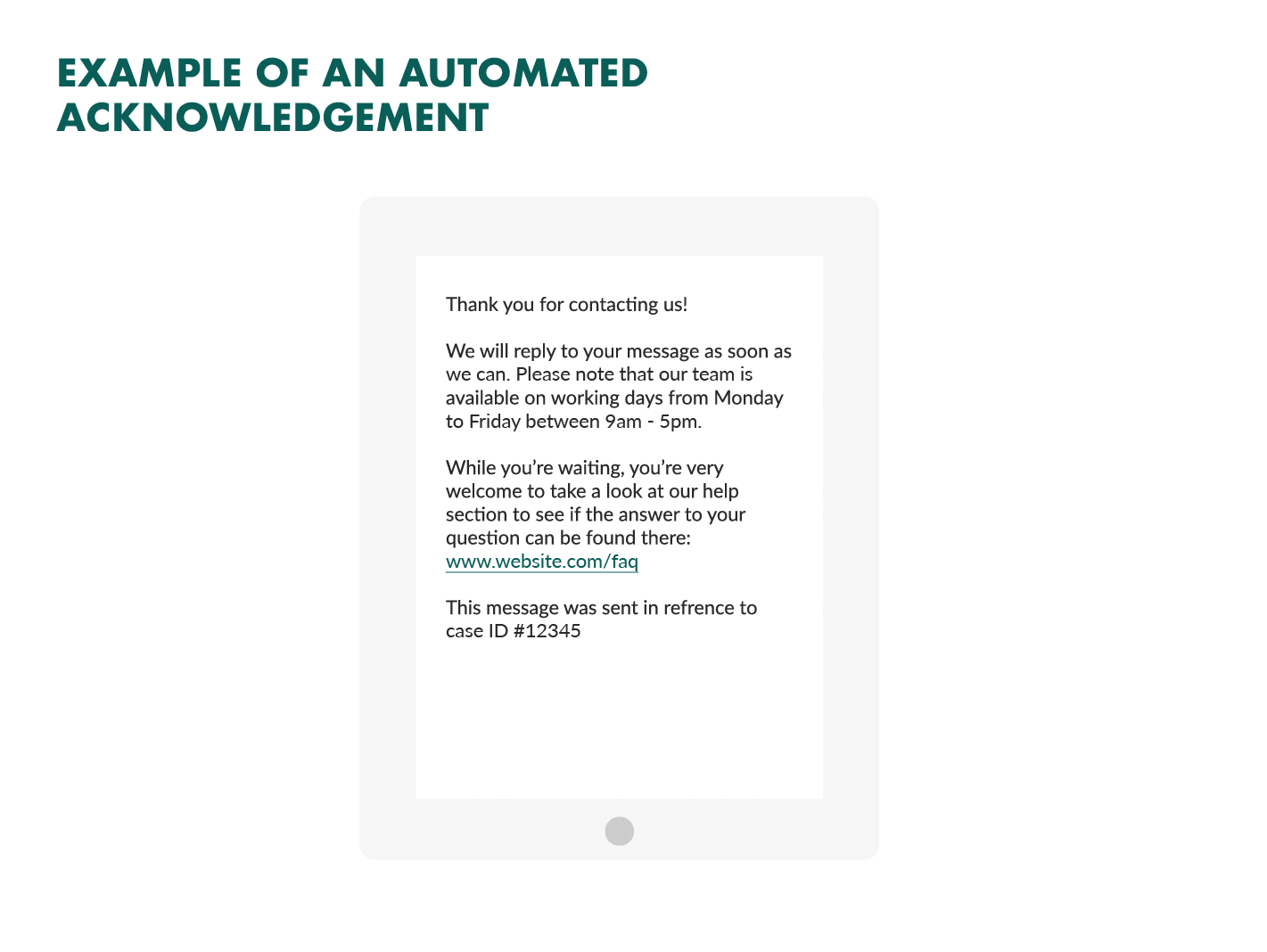
You can also use this opportunity to outline things like:
- Thanking them for their message. This way, they know you’re taking their communication seriously and paying it the respect they deserve.
- Opening hours of your customer service department. By including this, they know that if they email in the middle of the night or on a weekend, that it might take several hours (or even days), until their email is seen by someone.
- Average response times. Informing your customers of when they can expect a response sets expectations upfront. Plus, including a timeframe will take the pressure off your customer service team by avoiding follow-up inquiries.
- Links to FAQs / instruction manuals. No matter how easy to use you think your website is, your customers won’t always find documents like FAQs or manuals. Sometimes, all they need is a gentle nudge in the right direction, and through self-service they could end up solving their problem before you get the chance to respond.
3. Use time-based email alerts
Although we aim to respond to every customer service email, sometimes emails can get left behind.
For example, you could be waiting for some information before you can respond in full, or perhaps there’re more emails in the customer service queue than you expected. Whatever the reason, your customers deserve your attention within a reasonable timeframe.
To avoid losing emails in the system or response times being delayed for much longer than they need to be, try setting up time-based email alerts.
For companies that use a shared access mailbox, this will have to be done manually.
However, if you use customer service software, you can set this up automatically and tag new emails with a timer. Simply work out how quickly you would like to respond to your customers and then set up an alert to trigger before the timeframe. This way, you’ll ensure you have ample time to read and respond to your customers within your average response time.
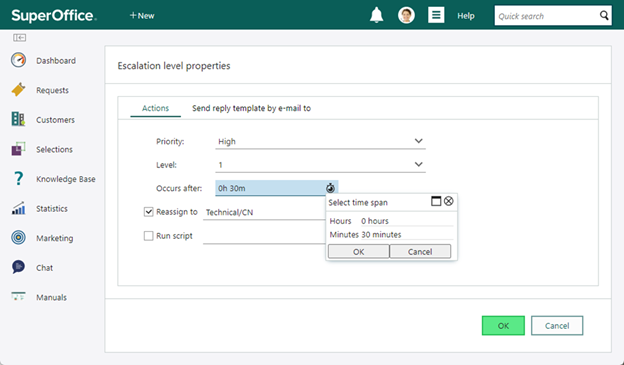
4. Use templates + text shortcuts
Experienced agents know what type of questions their customers ask time after time. Use this information to make sure your website and help documentation reflect these types of questions.
And you can also use it to better prepare your customer service team.
Rather than making your team repeatedly come up with custom responses to the same questions, you can supply them with customer service email templates to help make their job easier. Not only will it speed up your response time, but it’ll also help you keep your communication consistent.
This means that every customer will get the same answer to their question, with little or no deviation – helping to reinforce the brand and keep all your customers happy.
Of course, not every customer service query can be handled with a template.
Another way to help make writing emails easier is to use text shortcuts.
For example, by assigning shortcuts to commonly used words or phrases, you can dramatically reduce the number of keystrokes needed to write an email response.
Here’s how it could work: With the shortcuts updating automatically once the email has been sent, based on your settings.
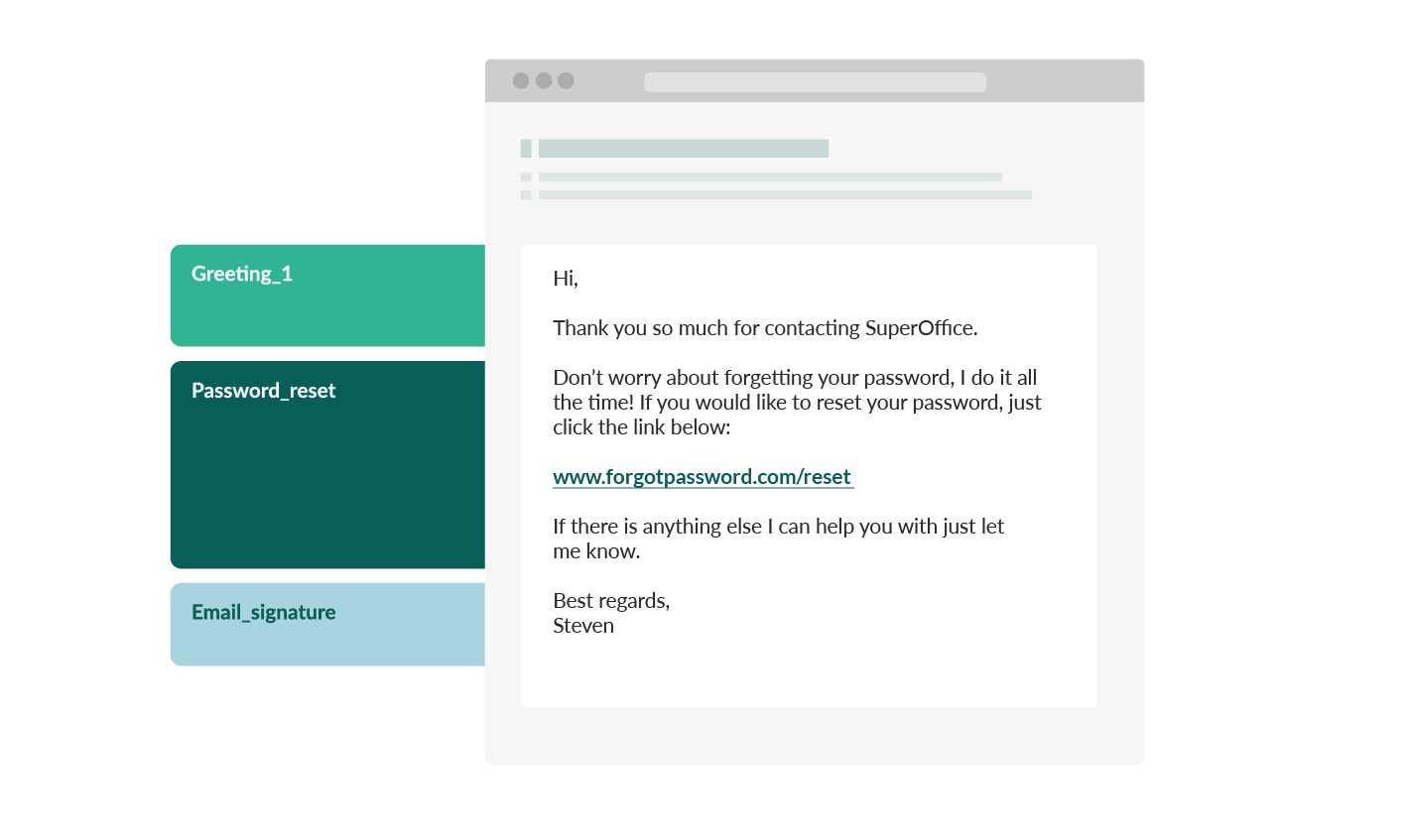
Simple, but very effective!
The more times you use the same shortcut, the quicker it will be to type up a response.
You could also use shortcuts for other parts of the email, including:
- Social media profile links,
- Links to FAQs or knowledge base,
- Email subscription copy and links.
Text shortcuts or email templates can dramatically reduce the amount of time needed to answer an email, which in turn will allow you to respond to more emails and reduce your average response time.
5. Categorize and prioritize the emails you receive
One of the best ways to speed up the way you answer customer service emails is to categorize and prioritize the emails you receive.
When a new email is received, it should go through a ‘triage’ system – just like a patient would in a hospital emergency room. You can assess an email based on its subject or theme and assign it a tag accordingly.
Different tags should have different levels of priority based on criteria such as time needed to respond, complexity of the problem, and the importance to both the customer and the business.
For example, we prioritize responding to sales ready leads (free trial and demo requests) over general enquiries.
Why? Well, research has shown that 63% of leads don’t respond within an hour. All tickets that match this priority will move to the top of the queue. Alternatively, you can find all prioritized tickets using the search function (as shown below).
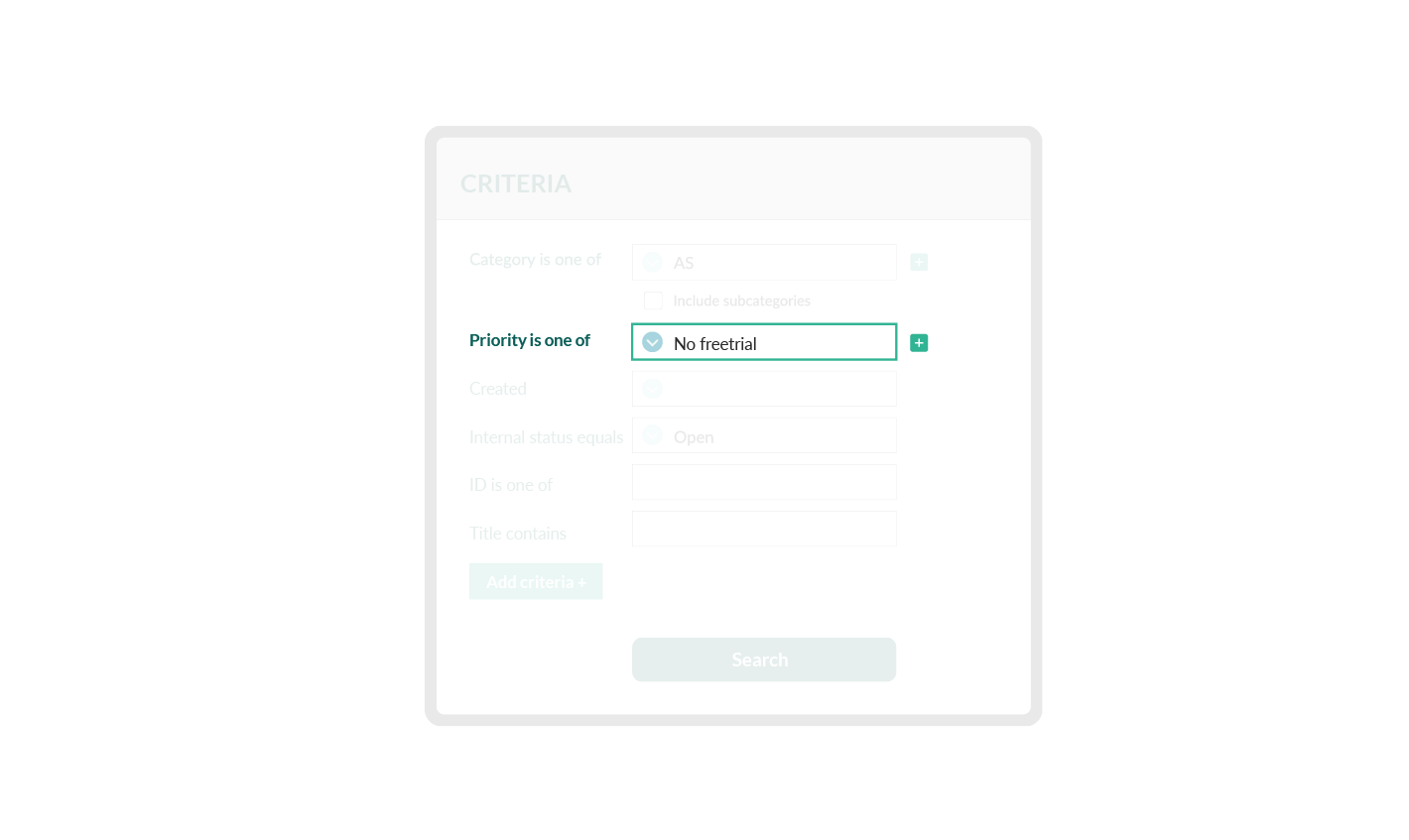
Once you have the emails categorized and prioritized your team can then efficiently respond to each email based on one category at a time by order of priority. By concentrating on one topic or subject area at a time, major time saving efficiencies can be made, compared to jumping between multiple topics which can be time-consuming and inefficient.
6. Employee development and training
What if I told you that investing into the training and development of your team may significantly reduce the time it takes to respond to customer support inquiries?
Consider the fact that your customer service staff represents your business.
They are the ones assisting clients in resolving issues, providing answers, and resolving problems.
By making an investment in their knowledge and skills, you're enhancing not only their performance but also the entire customer experience.
So how do you get started?
Encourage the members of your customer service team to concentrate on honing their communication, problem-solving, and conflict-resolution abilities.
Additionally, remember to collaborate and establish a team. When your staff collaborates, they can respond to client inquiries faster and more effectively.
7. Streamline your customer service processes
You might be able to cut down on customer service response times by speeding up, or spending time optimizing, the processes your team uses today to communicate with your customers.
For example, finding ways to automate manual tasks can make it easier for your employees to get back to customers and new leads.
Today, there’s tons of tools out there to help you streamline your customer service processes.
Find out what integrations are available that you can implement with your customer service software. It’s a great way to automate your business operations - improving your organization's efficiency and productivity.
A response time within one hour?
We reached out to Stein Ove Sektnan, manager of customer service at SuperOffice, to get his input on how to reduce response times.
Here’s what he had to say:
Asking your Customer Success team to respond quickly might sound easy enough, but the more you focus on speed, rather than quality, the more likely you are to lower the quality of service you provide to your customers.
When it comes to response times, here’s what you should think about:
Define what a reply is. A fast reply is not helpful if the reply doesn’t add value.
Customer service is a team effort. Cherry-picking the easy requests might help individuals respond quickly, but it doesn’t help achieve the team’s goals.
Share (and develop) knowledge across the team. When the workload spikes, whether due to seasonality, annual leave or sickness, having shared expertise across the team gives you the flexibility to handle increased customer requests.
Five years ago our customer service team`s response time reduced from an average of 5 hours to less than 1 hour. Since then, the average response time of the SuperOffice Customer Support team has remained the same.
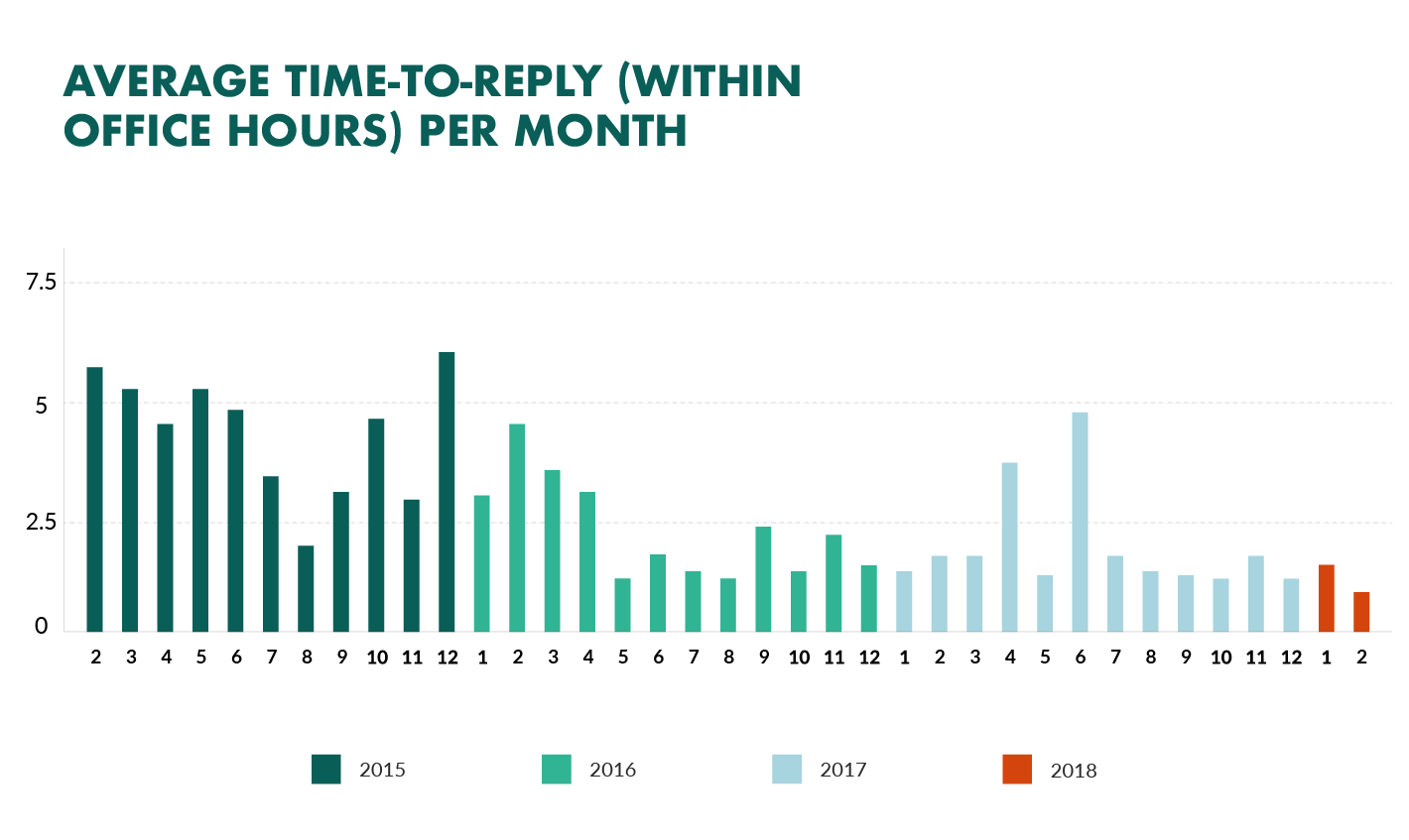
Conclusion
Reducing your customer service response time is incredibly important.
Not only can it help you make your customers happy and enhance your brand’s reputation – but when done properly, it can also improve efficiencies throughout your entire organization.
Yet, with the average response taking more than 12 hours, it’s clear that many companies could be doing more to reduce this figure.
If you’re looking to improve customer service, then remember these 7 easy-to-implement techniques to help set your company apart as an organization that values your customers:
- Implement customer service software to make your inbox more manageable.
- Use email autoresponders to keep your customers in the loop and manage expectations.
- Use time-based alerts to make sure no emails go missing or are delayed.
- Use templates and text shortcuts to reduce the time it takes to write each email.
- Categorize all incoming customer service emails and respond based on priority.
- Invest in employee training and development
-
Streamline your current business and customer service operations
Find out more about our annual customer service benchmark report and how 1,000 companies respond to customer service emails, download the report for free. Get free report.
